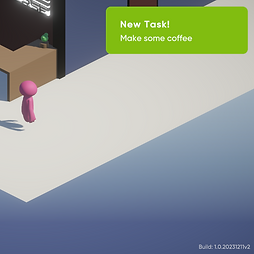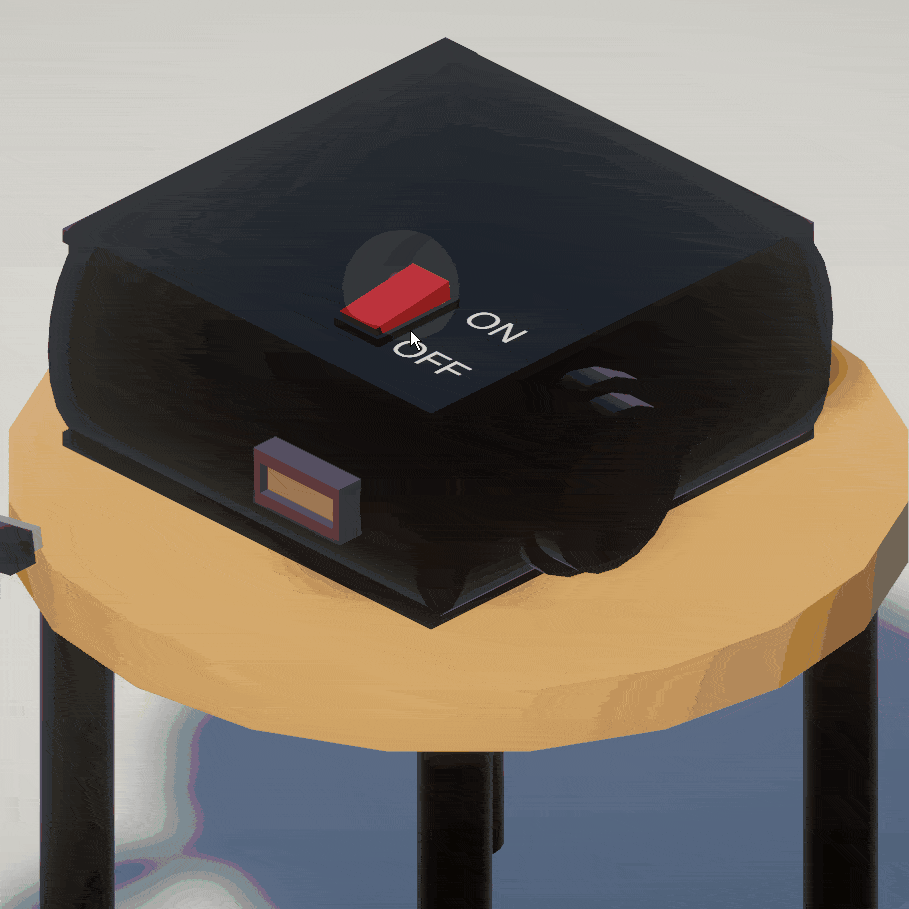
INTENT, which stands for Interactive Tool for Empathy in Neurotypicals, is a narrative-driven interactive experience designed to enhance neurotypicals' understanding and empathy towards autistic people in the workplace. In this transformational game, step into the company Betaverse, where you lead a newly-formed team as its team leader. Your team includes Tony, a meticulous engineer, and Ming, an insightful analyst, along with seasoned members, all tasked with a pivotal project.
Engage with unique characters and participate in minigames that not only entertain but also broaden your knowledge and challenge your perceptions. Navigate through complex scenarios and make strategic decisions that will not only determine the project's success but also shape the company’s culture. Your choices will influence how collaboration and allyship are fostered within your team.
Embark on this journey in INTENT to create a healthy, empathetic work environment where every contribution is valued and diverse perspectives are seen as crucial to collective success.
INTENT has been recognized for its impact and innovation, earning the 2024 Serious Play Silver Award in the Corporate / Vocational Skills Training category.


Overview
Project basic settings
Platform
Desktop WebGL
Tool Used
Unity, Yarn Spinner
Team
5 Members
Duration
4 Months
My Role
Game Designer,
Narrative Designer,
Programmer,
Environment Artist
My Responsibility
What I did in the project
INTENT is a 4-month project with 5 team members consisting of artists, narrative designers, game designers, and programmers. I am the team's game designer, narrative designer, programmer, and environment artist.
Game Design
-
The core game loop
-
The relationship between conversation, tasks, and interactions
-
Task designs
-
Design for transformational goal
Narrative Design
-
The overall story of the game
-
Tasks with stories
-
Some generic conversation dialogs
Programming
-
The tasks system
- The event system
- Minigame interaction
Environment Art
-
Created the office environment
Core Game Loop
The process of the game
Tutorial
The game begins with the player entering the office, starting off with a straightforward coffee-making task to help players become familiar with the mechanics.
Tasks
Tasks comes from interactions, and the narrative unfolds through the completion of these tasks.
Interactions
The interactive elements include conversations and minigame actions, both can either complete tasks, advance task progression, or introduce new tasks.
Transformation
This experience offers players valuable insights into interacting with autistic individuals, fostering understanding and empathy. It encourages them to become allies, promoting inclusivity and support for those on the autism spectrum in the workplace.
Episodes
The goal for different episodes

EP1 - Awareness
Players are introduced to the fundamentals of autism, gaining awareness of various scenarios and learning appropriate responses to better understand and support individuals with autism.

EP2 - Allyship
Building on the knowledge from Episode 1, players engage in active allyship through direct interactions that support and assist individuals with autism, applying what they've learned in practical settings.

EP3 - Result
This episode reveals the outcomes of the players' actions from the previous episodes, showcasing different endings based on their choices and the impact they've had on the community.
As players progress through the episodes, they learn to adapt their behaviors, communicate effectively, and foster positive relationships with autistic individuals. Each stage of the game escalates in interaction—from basic awareness to proactive support—mirroring the real-world process of understanding and building relationships. This progression emphasizes that meaningful changes in social interactions are gradual and continuous. This journey not only enriches the game experience but also aims to inspire more inclusive and supportive interactions in everyday life.
Tasks & Interactions
The tasks and interactions that progress the narrative
Player progression in the narrative is achieved by completing tasks, which are assigned based on the player's interactions with characters and their overall game progress. Here are a few examples.
TASK
INTERACTION

A New "Make Some Coffee" task was assigned at the start.

After making coffee, a conversation will be triggered.

A meeting notice from the manager.

Fixing the projector during the meeting to proceed.
These are just two examples of the tasks and interaction loops from episode one of the game. Many more challenges and hidden easter eggs await in the full experience, enhancing the fun, interactivity, and immersion for players.
Transformational Goal
The transformational goals we designed for
To achieve our goal of enhancing neurotypicals' understanding and empathy towards autistic people in the workplace, we have adopted principles from The Transformational Framework using them as our designing roadmap.
"I want to thank you and your team so much for working with us on this project. The game turned out incredible. We had an idea of what we wanted to get out of this process, and your project realized it in a fantastic way. I especially appreciated how your team learned about the subject matter, listened to our concerns over the storyline and narrative, and improved it all iteratively until we came to the final product. We look forward to using this game in our educational plans to teach neurotypical people how to be better allies to their autistic colleagues. Great job! "








